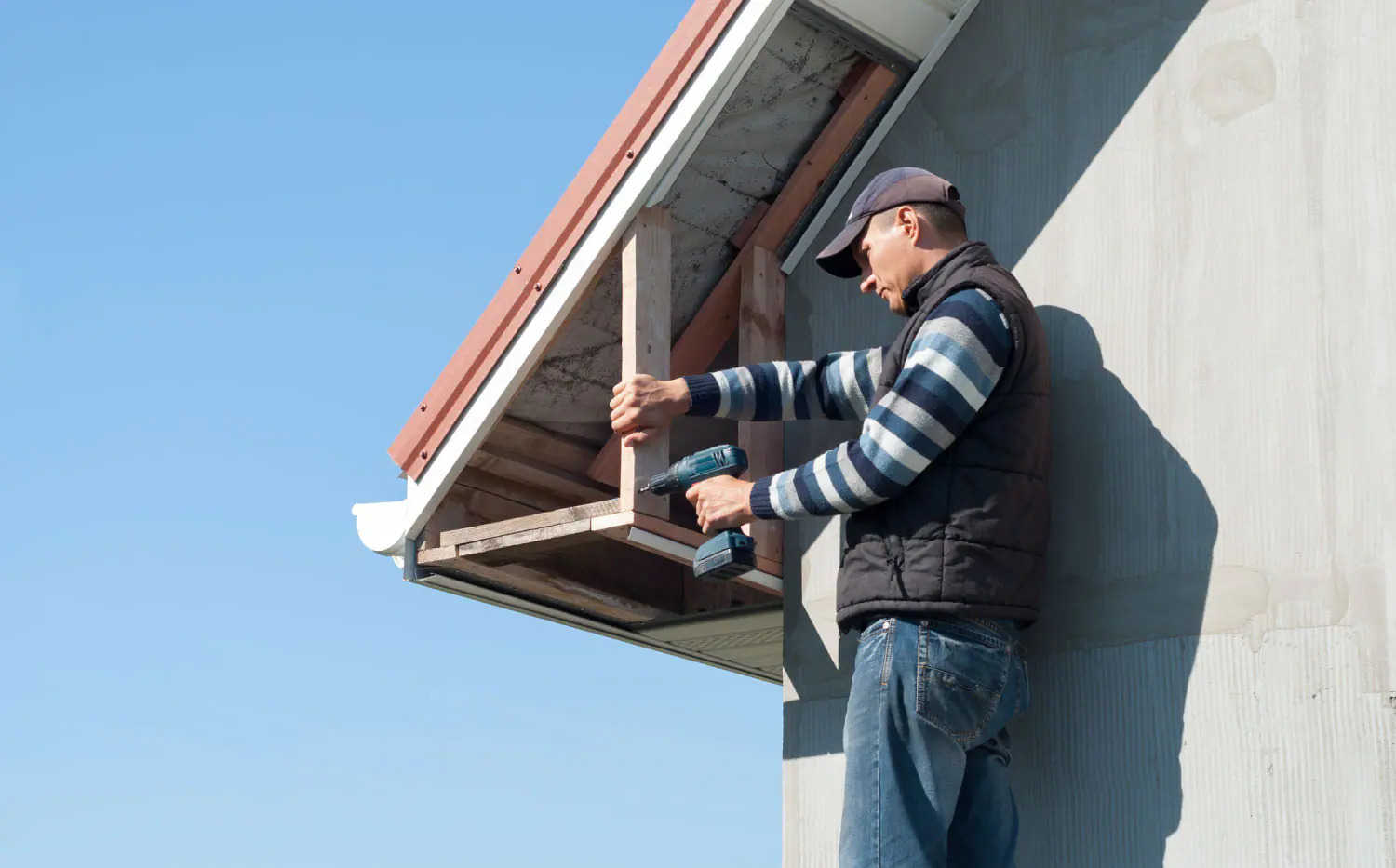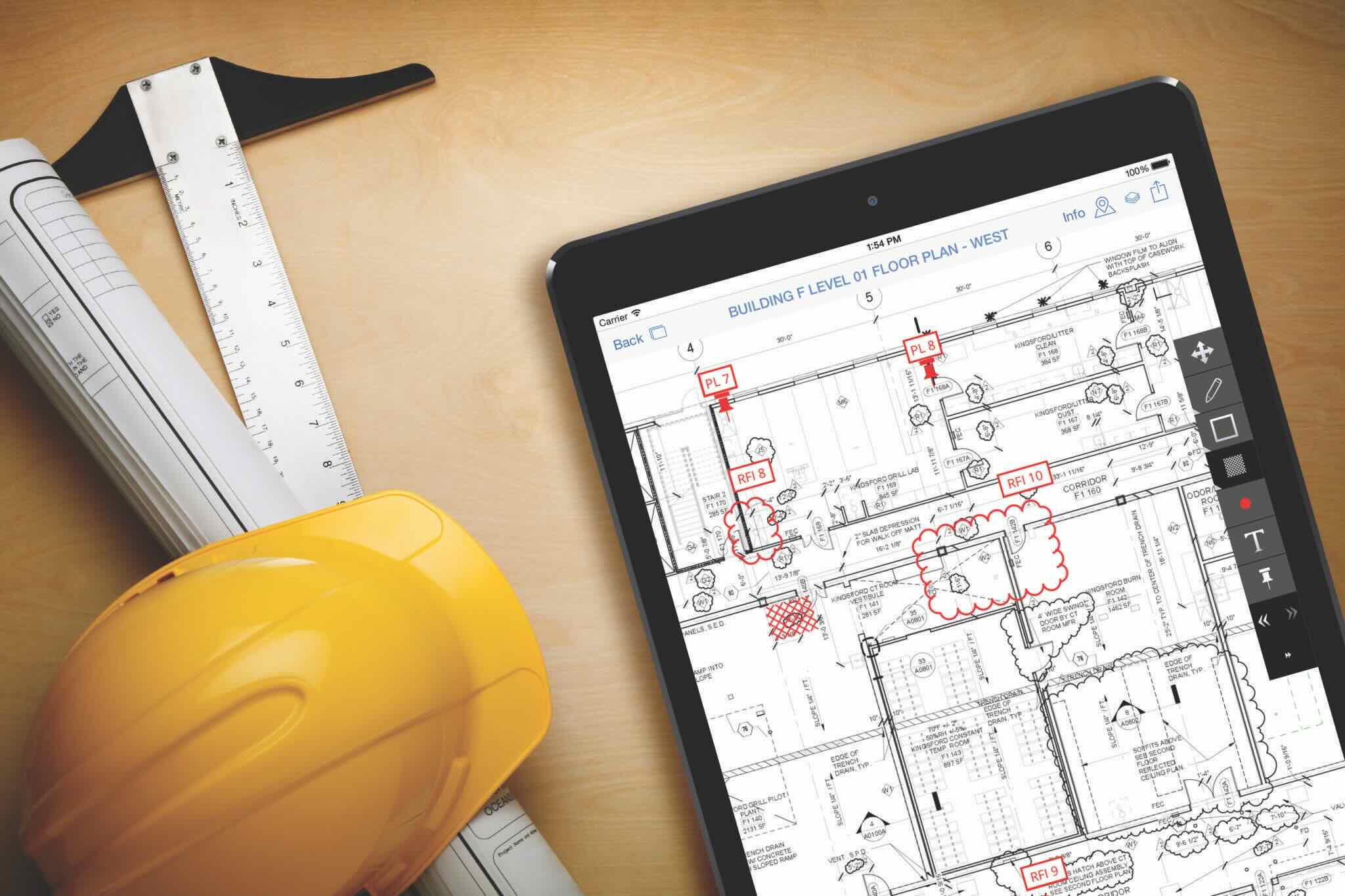Home>diy>Building & Construction>What Is CCD In Construction


Building & Construction
What Is CCD In Construction
Modified: October 18, 2024
Discover the meaning and importance of CCD in the context of building construction. Understand how CCD impacts project planning, cost estimation, and quality control.
(Many of the links in this article redirect to a specific reviewed product. Your purchase of these products through affiliate links helps to generate commission for Storables.com, at no extra cost. Learn more)
Introduction
Welcome to the world of construction, where buildings and structures are brought to life. Construction projects range from small residential buildings to sprawling commercial complexes, and they all require meticulous planning, skilled craftsmanship, and efficient execution. However, despite careful planning, construction projects can encounter unforeseen challenges that impact their progress and success.
One common challenge in the construction industry is Construction Change Directive (CCD). CCD refers to any modification or alteration in the original scope of work or specifications outlined in the contract. These changes often arise due to a variety of factors, including design flaws, unforeseen site conditions, stakeholder preferences, or regulatory requirements.
CCD can significantly impact the progress, timeline, and cost of a construction project. It requires additional resources, including labor, materials, time, and coordination, to accommodate the changes. If not managed effectively, CCD can lead to delays, cost overruns, disputes, and a compromised final outcome.
In this article, we will delve deeper into the concept of CCD in construction, discuss its causes and effects, explore the common challenges associated with it, and propose strategies to address and mitigate CCD in construction projects. We will also look at real-life case studies and examine the future trends in dealing with this challenge.
Whether you are a construction professional, project owner, or simply curious about the intricacies of the construction industry, this article will provide valuable insights into the world of CCD and its impact on construction projects.
Key Takeaways:
- Construction Change Directives (CCD) are inevitable in construction projects due to various factors such as design revisions, unforeseen site conditions, and stakeholder requests. Effective management and proactive strategies are essential to minimize their impact.
- Future trends in CCD management, including BIM, cloud-based collaboration platforms, and sustainability considerations, offer promising solutions to streamline the handling of CCD and mitigate risks in construction projects.
Read more: What Is Construction
Definition of CCD in Construction
Construction Change Directive (CCD) is a term used to describe any change or modification to the original scope of work or specifications outlined in a construction contract. When CCD occurs, it means that there is a need for adjustments in the project plans, designs, materials, or methods of construction. These changes are typically implemented through a formal process that involves documentation, negotiations, and approvals.
CCD can arise due to various reasons, such as design revisions, unforeseen site conditions, owner or stakeholder requests, regulatory changes, or other unforeseen circumstances that require alterations to the project’s original plans. It is important to note that CCD is different from a change order. A change order is a formal written document that specifies the agreed-upon changes to the contract, including any adjustments to the price, schedule, or scope of work.
The significance of CCD lies in its potential impact on the construction project. Each change in the project’s scope introduces new variables that need to be taken into account. These variables can affect the project’s timeline, cost, quality, and the final outcome. Managing CCD effectively is crucial to ensure that the project remains on track and that the changes are implemented efficiently and within the desired parameters.
CCD involves a collaborative process between multiple stakeholders, including the project owner, architects, engineers, contractors, and subcontractors. The process typically includes the submission of a proposal for the change, followed by negotiations, reviews, and approvals. It is important to document all CCD requests and discussions to maintain transparency and avoid disputes down the line.
While CCD can be disruptive and add complexity to a construction project, it is often necessary to adapt to changing circumstances and ensure the project’s success. Proper management of CCD requires effective communication, robust project documentation, and a proactive approach to problem-solving.
In the following sections, we will explore the causes and effects of CCD in construction and discuss strategies to address and mitigate this challenge.
Causes of CCD in Construction
Construction Change Directives (CCD) can stem from a variety of factors that necessitate modifications in the original scope of work or specifications outlined in a construction contract. Understanding the causes of CCD is crucial for construction professionals to anticipate and effectively manage potential changes. Here are some common causes of CCD in construction:
- Design Revisions: Changes in design may arise due to unforeseen challenges, evolving project requirements, or new insights during the construction process. Design revisions can lead to modifications in materials, dimensions, structural elements, or systems, triggering CCD.
- Unforeseen Site Conditions: Construction projects often encounter unknown ground conditions or hidden obstacles beneath the surface. Soil instability, underground utilities, or environmental factors can require modifications to the project plans, resulting in CCD.
- Owner or Stakeholder Requests: Project owners or stakeholders may request changes to the original plans or specifications to accommodate their preferences, functional requirements, or regulatory compliance. These requests can lead to CCD, especially if they significantly alter the project’s scope or design.
- Regulatory Changes: Changes in building codes, safety regulations, environmental standards, or zoning requirements can necessitate modifications in the construction project. Compliance with updated regulations may trigger CCD, leading to adjustments in design, materials, or construction methods.
- Errors or Omissions: Mistakes or oversights in the initial designs, plans, or specifications can require corrections through CCD. These errors can be due to incomplete information, miscommunications, or inadequate coordination among project team members.
- Scope Creep: Scope creep refers to the gradual expansion of the project’s scope beyond the original agreed-upon parameters. It occurs when additional features, functionalities, or requirements are added during the construction process, often without proper documentation or evaluation of the associated time and cost implications.
It is essential to note that CCD can arise from a combination of these causes or from unique circumstances specific to each construction project. Therefore, construction professionals must maintain open lines of communication, conduct thorough site assessments, anticipate potential changes, and continuously monitor the project to identify and address the causes of CCD proactively.
In the next section, we will explore the effects of CCD in construction and the challenges associated with managing CCD effectively.
Effects of CCD in Construction
Construction Change Directives (CCD) can have significant effects on construction projects, impacting various aspects such as timeline, cost, quality, and stakeholder relationships. Understanding the effects of CCD is essential for construction professionals to effectively manage and mitigate the consequences. Here are some common effects of CCD in construction:
- Project Delays: CCD often requires adjustments to the project plans, designs, or construction methods. Implementing these changes can disrupt the construction schedule, leading to delays in project completion. Delays not only affect the project timeline but also have financial implications due to increased labor and equipment costs.
- Increased Costs: CCD can result in additional expenses due to changes in materials, labor, equipment, or site conditions. Contractors may need to source new materials, hire additional workers, or extend project duration, leading to increased project costs. Furthermore, delays caused by CCD can result in contract penalties or loss of productivity.
- Quality Compromises: When CCD occurs, there is a risk of compromising the quality of the construction project. Rushed implementation of changes, improper coordination, or inadequate resources can lead to inferior craftsmanship, reduced durability, or structural deficiencies. Maintaining quality standards becomes challenging when dealing with frequent changes.
- Disputes and Litigation: CCD can lead to disagreements and conflicts between project stakeholders, including designers, contractors, and owners. Disputes may arise over design variations, responsibility for added costs, or delays attributed to CCD. If not resolved amicably, these conflicts can escalate to formal legal proceedings, leading to lengthy litigation and further project delays.
- Communication and Coordination Challenges: Effective communication and coordination among project team members become more complex with CCD. Each change requires clear and timely communication to ensure that all parties involved are aligned and updated. Failure to maintain transparent communication can lead to misunderstandings, rework, delays, and budget overruns.
- Reputation and Client Satisfaction: The effects of CCD can impact the reputation of construction professionals and the satisfaction of project owners. Delays, increased costs, and compromised quality can erode trust and confidence in the construction team. Satisfied clients are more likely to provide positive referrals and engage in future projects, while dissatisfied clients may tarnish the company’s reputation.
Managing the effects of CCD requires proactive planning, effective project management, and clear contractual agreements. Construction professionals should strive to minimize the negative impacts of CCD by maintaining open communication, diligently documenting changes, meticulously assessing cost implications, and implementing efficient change management procedures.
Next, we will discuss the common challenges associated with managing CCD in construction projects and explore strategies to address and mitigate these challenges.
Common Challenges Associated with CCD in Construction
Managing Construction Change Directives (CCD) in construction projects is a complex task that involves navigating various challenges. These challenges can hinder the efficient implementation of CCD and impact the overall success of the project. Here are some common challenges associated with CCD in construction:
- Time Constraints: The implementation of CCD often requires quick decision-making and prompt action. Time constraints can be a challenge when assessing the impact of changes, negotiating with stakeholders, obtaining necessary approvals, and coordinating the revised plans. Time-sensitive CCD scenarios can lead to rushed decision-making, potentially compromising the quality of the changes.
- Cost Management: CCD can significantly impact project costs, requiring careful cost estimation, analysis, and control. Determining the cost implications of changes, tracking incurred expenses, and effectively communicating the financial impact to stakeholders can be challenging. Proper cost management is crucial to avoid cost overruns, financial disputes, and strained relationships with clients and subcontractors.
- Effective Documentation: Thorough documentation is essential for managing CCD efficiently. Accurate and complete documentation helps in tracking changes, communicating revised requirements, and resolving potential disputes. However, maintaining comprehensive and up-to-date documentation can be challenging, especially when dealing with multiple changes simultaneously or working with large project teams.
- Contractual Ambiguity: Ambiguous contract language or poorly defined clauses can increase the complexity of managing CCD. Lack of clarity in the contract terms, responsibilities, and change order procedures can lead to conflicting interpretations and disputes. Construction professionals must ensure that contracts are clear, comprehensive, and encompass the necessary provisions for handling CCD effectively.
- Communication and Stakeholder Coordination: Coordination becomes crucial when managing CCD, as it involves multiple stakeholders, including owners, designers, contractors, and subcontractors. Effective communication channels, regular project meetings, and transparent collaboration are key to address and resolve CCD-related issues. However, coordinating stakeholders with varying interests, priorities, and communication styles can pose a challenge.
- Project Continuity: CCD can disrupt the project’s workflow and continuity. Integrating changes into the ongoing construction process without causing delays or compromising quality requires careful planning and coordination. Balancing CCD implementation with the project schedule, labor availability, and material procurement can be a critical challenge for construction professionals.
Overcoming these challenges requires proactive project management, effective communication, and diligent documentation. Construction professionals should establish clear change management processes, educate project team members on the procedures, and ensure open lines of communication to address challenges as they arise. With careful planning and proactive measures, the challenges associated with CCD can be effectively managed, leading to smoother project execution.
In the next section, we will explore strategies to address and mitigate CCD in construction projects, providing insights into how these challenges can be overcome.
Read more: What Is Infrastructure Construction
Strategies to Address CCD in Construction
Construction Change Directives (CCD) are an inevitable part of construction projects, and it is crucial to develop effective strategies to address and mitigate their impact. By implementing proactive measures, construction professionals can effectively manage CCD and ensure successful project execution. Here are some strategies to address CCD in construction:
- Establish Clear Change Management Processes: Develop clear and well-defined procedures for managing CCD. This includes outlining the process for documenting, evaluating, and implementing changes. Clearly communicate these processes to all project stakeholders and ensure that they have a thorough understanding of the steps involved.
- Comprehensive Project Documentation: Maintain thorough and up-to-date project documentation, including contracts, plans, permits, and change orders. Document all CCD requests, discussions, approvals, and any modifications made to the original plans. Detailed documentation will help in effectively tracking and managing CCD throughout the project lifecycle.
- Effective Communication and Collaboration: Foster open communication channels among project team members and stakeholders. Regularly communicate project updates, including any potential CCD, to all relevant parties. Encourage collaboration and ensure that all stakeholders are involved in decision-making processes related to CCD.
- Proactive Risk Assessment: Conduct thorough risk assessments during the planning phase to identify potential areas of CCD. Anticipating possible changes and their impacts early on will allow for better preparation and contingency planning. Consider site conditions, stakeholder requirements, and any regulatory changes that may affect the project.
- Continuous Monitoring and Evaluation: Implement a robust monitoring system to track the progress of CCD and assess its impact on the project. Regularly evaluate the timeline, cost, and quality implications of CCD to identify any potential issues early on. This will enable timely adjustments and proactive problem-solving.
- Collaborative Decision-Making: Involve key stakeholders in the decision-making process for CCD. Seek input from the project owner, architects, engineers, and contractors to ensure that changes are well-informed and properly evaluated. Collaborative decision-making promotes buy-in, minimizes disputes, and leads to more successful CCD implementation.
- Regular Project Meetings and Reviews: Conduct regular project meetings to review progress, address challenges, and discuss CCD-related issues. These meetings provide an opportunity for all stakeholders to share updates, address concerns, and collaborate on finding solutions. Regular reviews and evaluations will help in maintaining project alignment and addressing any emerging CCD promptly.
- Engage in Continuous Professional Development: Stay updated with industry trends, regulations, and best practices related to managing CCD. Continuous professional development ensures that construction professionals are equipped with the knowledge and skills to effectively address and mitigate challenges associated with CCD.
By adopting these strategies, construction professionals can navigate the complexities of CCD and minimize its negative impact on construction projects. Proactive planning, effective communication, and diligent project management are essential for successfully addressing CCD and ensuring the project’s success.
In the next section, we will explore real-life case studies that illustrate the challenges and strategies related to CCD in construction projects.
CCD in construction stands for “Contractor Controlled Insurance Program,” which is a type of insurance policy that provides coverage for all contractors and subcontractors on a construction project. This can help streamline the insurance process and reduce potential coverage gaps.
Case Studies on CCD in Construction
Examining real-life case studies provides valuable insights into the challenges and strategies related to Construction Change Directives (CCD) in construction projects. Let’s explore two case studies that highlight the impact of CCD and the strategies implemented to address it:
Case Study 1: Residential Development Project
In a residential development project, a CCD arose due to unforeseen site conditions. During excavation, the construction team discovered a large rock formation that hindered the foundation work. This unexpected condition required adjustments to the original plans, resulting in a potential delay and increased costs.
Challenge: The construction team faced the challenge of managing the CCD without compromising the project timeline and budget.
Strategy: The team implemented the following strategies:
- Engaged geotechnical experts to assess the rock formation and recommend alternative foundation solutions.
- Conducted a thorough cost analysis to evaluate the financial implications of the changes.
- Communicated the CCD to the project owner, presenting them with the revised plans, schedule, and estimated additional costs.
- Collaborated with the owner to make informed decisions and obtain necessary approvals efficiently.
- Implemented the recommended foundation solution promptly while closely monitoring the progress to mitigate any potential delays.
By implementing these strategies, the construction team successfully addressed the CCD, minimized delays and cost overruns, and ensured the project’s continued progress.
Case Study 2: Commercial Office Building Project
In a commercial office building project, a CCD occurred due to a change in the owner’s requirements for the HVAC system. The original plans included a conventional system, but the owner requested a more energy-efficient, alternative system that required design revisions and additional engineering work.
Challenge: The construction team faced the challenge of accommodating the owner’s request for the HVAC system change while adhering to project timelines and budgetary constraints.
Strategy: The team implemented the following strategies:
- Conducted a detailed analysis of the proposed alternative HVAC system, evaluating its impact on energy savings, construction costs, and project feasibility.
- Collaborated with the owner to discuss the implications of the CCD, including added design and engineering costs and potential schedule adjustments.
- Engaged mechanical and electrical consultants to ensure proper integration of the alternative system into the existing building plans.
- Maintained clear communication with subcontractors and suppliers to procure the necessary materials and equipment within the revised timeline.
- Implemented a thorough quality control process to ensure that the alternative HVAC system met the owner’s expectations and complied with energy-efficiency standards.
By adopting these strategies, the construction team successfully implemented the CCD, met the owner’s requirements, and maintained the project’s overall schedule and budget.
These case studies showcase the importance of proactive planning, effective communication, and collaboration in addressing CCD in construction projects. By adapting strategies to fit the specific circumstances, construction professionals can navigate CCD challenges and ensure successful project outcomes.
In the following section, we will explore future trends in dealing with CCD in construction.
Read more: What Is Construction Dewatering
Future Trends in Dealing with CCD in Construction
The construction industry is constantly evolving, and as technology advances, new trends emerge in dealing with Construction Change Directives (CCD). These trends aim to streamline the CCD management process, enhance project communication, and mitigate risks. Let’s explore some future trends in managing CCD in construction:
- Building Information Modeling (BIM): BIM technology allows construction professionals to create a virtual model of the building, facilitating easier design modifications and reducing the likelihood of conflicts. By using BIM, stakeholders can visualize the impact of potential CCD and make informed decisions before implementation.
- Cloud-Based Collaboration Platforms: Cloud-based collaboration platforms enable real-time information sharing and collaboration among project stakeholders. These platforms allow for seamless communication, faster approvals, and improved document control, enhancing the efficiency and transparency of CCD management.
- Data Analytics: Utilizing data analytics can help construction professionals identify patterns and trends related to CCD occurrences. By analyzing historical project data, construction teams can predict potential CCD scenarios, allowing for proactive risk management and early intervention to prevent or mitigate their impact.
- Integration of Internet of Things (IoT): IoT technology provides real-time monitoring and data collection capabilities, allowing for early detection of potential issues that may give rise to CCD. Sensors and connected devices can provide insights on equipment performance, site conditions, and environmental factors, helping construction professionals identify potential CCD triggers and take proactive measures.
- Virtual Reality (VR) and Augmented Reality (AR): VR and AR technologies offer immersive experiences, allowing stakeholders to visualize and interact with proposed changes to the construction project. These technologies enhance communication, facilitate owner feedback, and reduce the potential for misunderstandings or errors related to CCD.
- Enhanced Change Management Processes: As the complexity of construction projects increases, there will be a greater emphasis on developing streamlined and efficient change management processes. This includes establishing clear protocols for CCD documentation, evaluation, approval, and implementation, ensuring effective communication and minimizing delays or disputes.
- Sustainability and Environmental Considerations: With a growing emphasis on sustainable construction practices, CCD management will increasingly focus on incorporating environmentally friendly design changes. This may include integrating renewable energy systems, implementing green building materials, or adopting eco-friendly construction methods.
These future trends hold great potential to transform the way CCD is managed in construction projects. Construction professionals who embrace these trends and leverage the benefits they offer will be better equipped to handle the challenges posed by CCD and deliver successful projects.
In the final section, we will summarize the key points discussed throughout this article on CCD in construction.
Conclusion
Construction Change Directives (CCD) are an inherent aspect of construction projects, and their effective management is crucial for project success. CCD can result from various causes such as design revisions, unforeseen site conditions, regulatory changes, stakeholder preferences, and errors or omissions.
The effects of CCD can be far-reaching, impacting project timelines, costs, quality, stakeholder relationships, and project outcomes. It is essential for construction professionals to address CCD promptly and implement strategies to minimize its negative impacts.
Common challenges associated with CCD include time constraints, cost management, effective documentation, contractual ambiguity, communication and coordination issues, and project continuity. Overcoming these challenges requires proactive planning, clear communication, and collaborative decision-making.
To address CCD effectively, construction professionals should establish clear change management processes, maintain comprehensive project documentation, foster effective communication and collaboration, conduct proactive risk assessments, continuously monitor and evaluate changes, and engage in continuous professional development.
Looking into the future, trends such as Building Information Modeling (BIM), cloud-based collaboration platforms, data analytics, Internet of Things (IoT), virtual reality (VR), augmented reality (AR), enhanced change management processes, and sustainability considerations will play a significant role in managing CCD efficiently and mitigating risks.
In conclusion, by understanding the causes and effects of CCD, recognizing and addressing the common challenges associated with it, and adopting effective strategies and future trends, construction professionals can navigate the complexities of CCD and ensure successful project execution. By proactively managing CCD, construction projects can stay on track, maintain budgetary control, enhance stakeholder relationships, and deliver high-quality buildings and structures.
Frequently Asked Questions about What Is CCD In Construction
Was this page helpful?
At Storables.com, we guarantee accurate and reliable information. Our content, validated by Expert Board Contributors, is crafted following stringent Editorial Policies. We're committed to providing you with well-researched, expert-backed insights for all your informational needs.














0 thoughts on “What Is CCD In Construction”